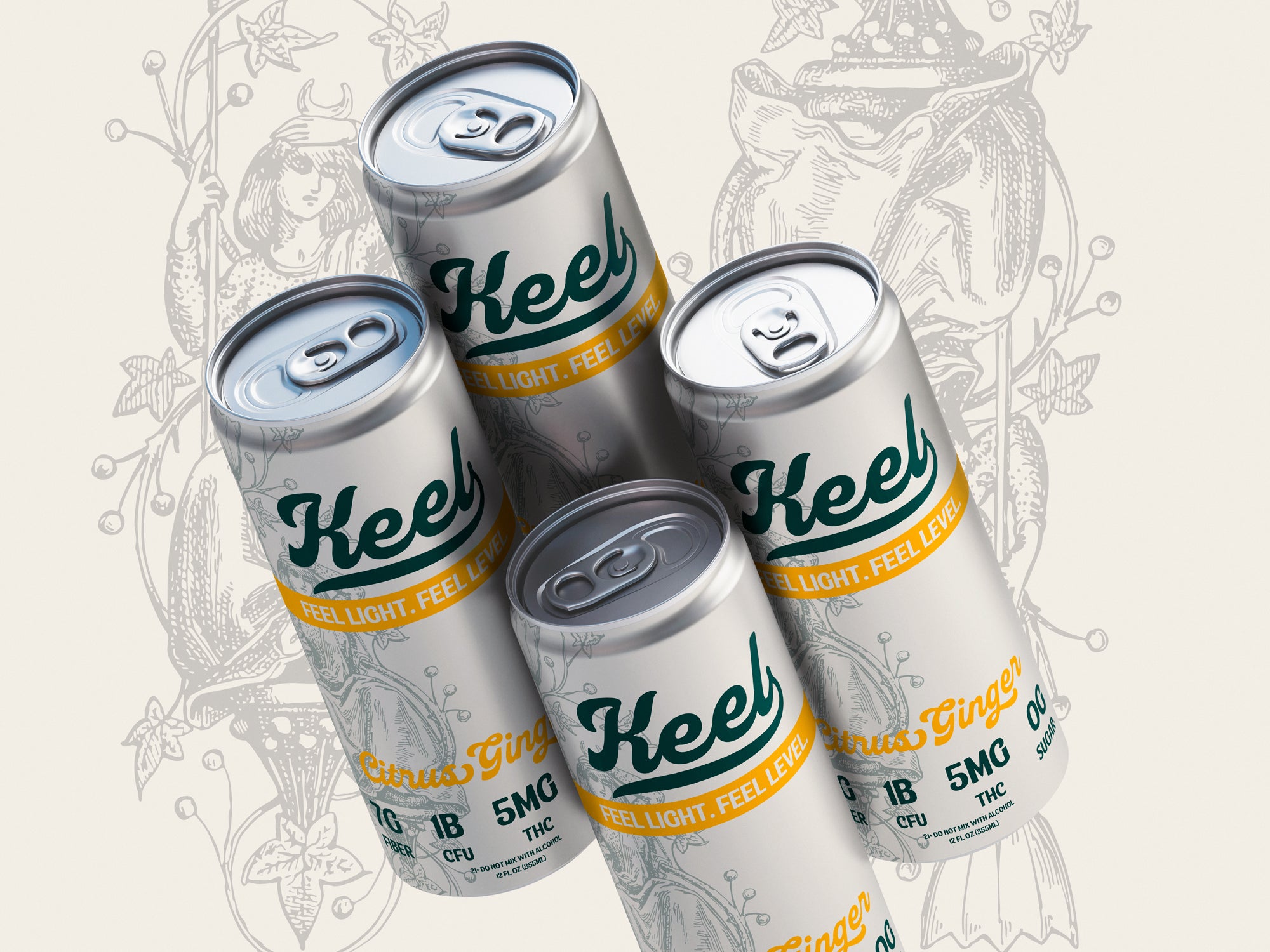TL;DR
Hemp-derived Δ9 THC is the same molecule as marijuana THC, but it's extracted from hemp plants (under 0.3% THC by dry weight) to comply with federal law. The 2018 Farm Bill legalized hemp and its derivatives, including Δ9 THC, at the federal level. However, availability varies by state—some states restrict or ban hemp-derived THC products despite federal legality. Microdoses (2–10 mg) provide a light, manageable effect. Always check third-party COAs, verify state laws, and use responsibly (21+, no driving, no alcohol mixing).
Hemp-derived Δ9 THC (delta-9-tetrahydrocannabinol) is the primary psychoactive compound found in cannabis, extracted from hemp plants that contain no more than 0.3% THC by dry weight as defined by federal law. Chemically, it is identical to Δ9 THC from marijuana—the molecule, effects, and metabolism are the same. The difference lies in the source plant and legal classification: hemp is federally legal under the 2018 Farm Bill, while marijuana remains federally illegal. Hemp-derived Δ9 products (beverages, edibles, tinctures) are legal at the federal level but availability varies by state due to differing state regulations. Microdose products (2–10 mg per serving) provide a light, predictable effect and are commonly used as non-alcoholic alternatives for relaxation or social settings.
What "Hemp-Derived Δ9" Means
Delta-9-tetrahydrocannabinol (Δ9 THC) is the main psychoactive cannabinoid in cannabis. It binds to CB1 receptors in your brain and nervous system, producing effects like relaxation, euphoria, altered time perception, and appetite stimulation. The cannabis plant naturally produces Δ9 THC in varying concentrations depending on genetics and cultivation methods.
The distinction between "hemp" and "marijuana" is legal, not botanical—both are Cannabis sativa plants. Under the 2018 Farm Bill (Agriculture Improvement Act), hemp is defined as cannabis containing no more than 0.3% Δ9 THC by dry weight. Any cannabis plant exceeding 0.3% THC is classified as marijuana and remains a Schedule I controlled substance under federal law. This 0.3% threshold determines legality, not chemistry or effects.
Hemp-derived Δ9 THC is extracted from hemp plants through various methods (CO2 extraction, ethanol extraction, distillation) and concentrated into oils, tinctures, or infused into beverages and edibles. A single hemp plant contains small amounts of Δ9 THC (under 0.3% by weight), but when extracted and concentrated, manufacturers can produce products with 5 mg, 10 mg, or more per serving while still sourcing from federally compliant hemp.
Example: A hemp flower weighing 100 grams at 0.3% THC contains 300 mg of Δ9 THC total. If that flower is processed and the THC is extracted and infused into 60 beverages at 5 mg each, those beverages are hemp-derived and federally legal, even though each drink contains more than 0.3% THC by weight. The legal compliance applies to the source plant, not the final product concentration.
It's important to note that hemp-derived Δ9 THC is not synthetic. It's naturally occurring THC from hemp plants, extracted and concentrated. This differs from Delta-8 THC, which is often synthesized from CBD through chemical conversion (though some Delta-8 is also naturally derived). Hemp-derived Δ9 is the same molecule your body would process from marijuana—there's no chemical difference, only a legal one based on plant source.
State-by-State Availability
⚠️ Important: Availability varies by state. While hemp-derived Δ9 THC is federally legal under the 2018 Farm Bill, individual states have the authority to regulate or ban hemp-derived intoxicating cannabinoids. Some states allow hemp-derived Δ9 products with no restrictions. Others limit THC content per serving, require state licensing, or ban all intoxicating hemp products regardless of federal law. Always verify your state's current regulations before purchasing or possessing hemp-derived Δ9 THC products.
As of October 2025, hemp-derived Δ9 THC products are available in over 35 states, with varying degrees of regulation. States generally fall into three categories:
Category 1: Permissive states (full availability). These states allow hemp-derived Δ9 products with minimal restrictions beyond age verification (21+) and compliance with the federal 0.3% source plant definition. Examples include Texas, Georgia, Florida, North Carolina, and Tennessee. In these states, hemp-derived Δ9 beverages and edibles are sold in convenience stores, wellness shops, and online with direct shipping.
Category 2: Regulated states (restricted availability). These states allow hemp-derived Δ9 but impose additional requirements: THC limits per serving (e.g., 5 mg max per drink), state licensing for manufacturers and retailers, or mandatory lab testing and labeling. Examples include California, Colorado, and Oregon. Products are available but may be harder to find or restricted to licensed dispensaries.
Category 3: Restrictive states (banned or severely limited). These states have explicitly banned hemp-derived intoxicating cannabinoids (including Δ9 THC from hemp) or restricted them so heavily that products are unavailable. Examples include Idaho, Kansas, and Rhode Island. In these states, possession of hemp-derived Δ9 may be illegal even though the product is federally legal.
State laws change frequently. Some states are moving toward regulation (creating frameworks for legal sale), while others are banning hemp-derived intoxicating products entirely. Before purchasing, check your state's Department of Agriculture, Department of Health, or cannabis regulatory agency for current rules. Manufacturers like Keel maintain updated state availability maps showing where products can be legally shipped and sold.
Microdose Levels & Onset Basics
A microdose of Δ9 THC typically ranges from 2–10 mg per serving. This is significantly lower than recreational marijuana edibles (10–50+ mg) and is designed to produce a subtle, functional effect rather than intense intoxication. Microdosing allows users to experience light relaxation, mood elevation, or stress relief without impairment that interferes with daily activities.
Common microdose ranges:
- 2–3 mg: Threshold dose. Most people feel minimal effects—slight relaxation, reduced anxiety, or improved mood. Suitable for first-time users or those highly sensitive to THC.
- 5 mg: Standard microdose. Produces noticeable but mild effects: relaxation, light euphoria, enhanced sensory perception. Most users remain functional and clear-headed. This is the most common serving size in hemp-derived Δ9 beverages.
- 7–10 mg: Higher microdose. Effects are stronger but still manageable for regular users. May produce mild time dilation, increased appetite, or deeper relaxation. Less suitable for beginners or work/driving contexts.
Onset and duration depend on consumption method:
Beverages (fastest onset): Liquid absorption begins in the mouth and stomach, producing effects within 15–45 minutes. Peak effects occur at 60–90 minutes and last 2–4 hours. Beverages offer a faster, more predictable onset than solid edibles because they bypass some first-pass metabolism in the liver. This makes beverages easier to dose—you can gauge effects within 30 minutes and decide whether to consume more.
Edibles (slower onset): Solid foods (gummies, chocolates, baked goods) must be fully digested before THC enters the bloodstream. Onset takes 45–90 minutes, with peak effects at 2–3 hours and duration of 4–8 hours. Edibles produce stronger, longer-lasting effects than beverages at the same dose because liver metabolism converts Δ9 THC into 11-hydroxy-THC, a more potent metabolite.
Factors affecting onset and intensity: Body weight, metabolism, tolerance, food in stomach (slows absorption), and individual endocannabinoid system variability all influence THC effects. Start with the lowest dose (2–5 mg) if you're new to THC or haven't used it in months. Wait at least 90 minutes before consuming more—overconsumption is the most common mistake, leading to anxiety or discomfort.
How to Evaluate Hemp-Derived Δ9 Products
Not all hemp-derived Δ9 products are created equal. Quality, safety, and transparency vary widely. Use these criteria to evaluate products before purchasing:
Third-party lab testing and COAs (mandatory): Reputable brands test every batch at an independent, ISO-accredited lab and publish Certificates of Analysis (COAs) showing cannabinoid potency, contaminants (pesticides, heavy metals, solvents), and microbial safety. COAs should be searchable by batch code (printed on your product) and updated for every production run. If a brand doesn't publish COAs or makes you email to request them, don't buy the product. Untested products may contain inaccurate THC levels, dangerous contaminants, or synthetic cannabinoids.
Accurate THC labeling: The label should state the exact mg of Δ9 THC per serving (e.g., "5 mg Δ9 THC per can"). Avoid vague claims like "contains THC" or "hemp extract" without quantification. The COA should confirm that the labeled amount matches lab-tested potency (within ±10% is acceptable due to natural variability). If the label says 5 mg and the COA shows 2 mg, the product is mislabeled and the brand lacks quality control.
Low added sugar (under 5 grams per serving): Many hemp-derived beverages are loaded with sugar (15+ grams) to mask the earthy flavor of cannabis. High sugar content creates a crash that counteracts THC's relaxing effects and contributes empty calories. Choose drinks with 0–5 grams of added sugar. Natural fruit flavors, stevia, or monk fruit work well without spiking blood glucose.
Transparent sourcing: The brand should disclose where hemp is grown (U.S.-grown is preferable due to stricter agricultural standards) and how THC is extracted (CO2 or ethanol extraction are cleanest; avoid products using butane or propane extraction without proper purging). Transparency about manufacturing processes indicates the brand takes safety seriously.
Clear dosing instructions: Products should include guidance on serving size, onset time, and duration. Labels like "Start with 1/2 can if new to THC" or "Wait 60 minutes before consuming more" show the brand prioritizes user safety. Avoid products with no usage instructions or those that encourage overconsumption.
Compliance statements: Look for disclaimers confirming the product is hemp-derived (under 0.3% THC source plant), 21+ only, and compliant with federal regulations. The label should include warnings about pregnancy, breastfeeding, driving, and operating machinery. Products lacking these warnings are irresponsible and potentially illegal.
Responsible Use Guidelines
Hemp-derived Δ9 THC is psychoactive and must be used responsibly. Follow these guidelines to ensure safe consumption:
Age 21+ only: THC products are for adults 21 and older. THC affects brain development in adolescents and should never be used by minors. Store products securely out of reach of children and pets.
Do not drive or operate machinery: THC impairs reaction time, coordination, and judgment. Never drive, operate heavy machinery, or engage in activities requiring full attention after consuming THC. Effects can last 2–4 hours (beverages) or longer (edibles). Wait until you are completely sober before driving. Legal limits for THC impairment vary by state, but even microdoses can result in DUI charges.
Do not mix with alcohol: Combining THC and alcohol intensifies impairment and increases risk of nausea, dizziness, and loss of coordination. Use hemp-derived Δ9 as an alternative to alcohol, not in addition to it. This is especially important for beverages marketed as "alcohol alternatives"—they are meant to replace alcohol, not accompany it.
Start low, go slow: If you're new to THC or haven't used it recently, start with 2–5 mg. Wait at least 60–90 minutes before consuming more. Overconsumption causes anxiety, paranoia, rapid heart rate, and extreme drowsiness. There is no antidote for THC overconsumption—you must wait for effects to subside (4–8 hours). If you overconsume, stay hydrated, rest in a safe environment, and avoid additional substances.
Not for pregnant or nursing individuals: THC crosses the placenta and passes into breast milk. Use during pregnancy or breastfeeding may harm fetal or infant development. Consult a healthcare provider if you have questions about THC use during pregnancy.
Check with your doctor if you have health conditions: THC can interact with medications (blood thinners, sedatives, antidepressants) and may exacerbate certain conditions (anxiety disorders, heart conditions, schizophrenia). Consult a healthcare provider before using THC if you take prescription medications or have a diagnosed medical condition.
Keep out of reach of children and pets: THC poisoning in children and pets is a medical emergency. Symptoms include lethargy, loss of coordination, vomiting, and seizures. Store products in child-proof containers in locked cabinets. If accidental ingestion occurs, seek immediate medical attention.
Frequently Asked Questions
Is hemp-derived Δ9 THC the same as marijuana THC?
Yes, chemically. Hemp-derived Δ9 THC and marijuana-derived Δ9 THC are the exact same molecule (delta-9-tetrahydrocannabinol). They have identical chemical structures, bind to the same receptors in your brain, and produce the same effects at the same doses. The only difference is the source plant: hemp (under 0.3% THC by dry weight, federally legal) vs. marijuana (over 0.3% THC, federally illegal). Your body cannot distinguish between hemp-derived and marijuana-derived Δ9 THC—the molecule is processed identically. Legal and regulatory differences are based on plant classification, not chemistry.
Can I travel with hemp-derived Δ9 THC products?
It depends. Traveling within states where hemp-derived Δ9 is legal (and you are 21+) is generally permitted, though you should carry the product in its original packaging with COAs accessible. Crossing state lines is riskier—if you travel from a permissive state to a restrictive state, you may be violating the destination state's law even if the product is federally legal. Air travel is particularly complicated: TSA follows federal law (which allows hemp-derived Δ9), but airline policies vary and local law enforcement at your destination may confiscate products or issue citations. International travel with THC products (even hemp-derived) is illegal in most countries and can result in serious legal consequences. Check laws at your destination before traveling with hemp-derived Δ9 products.
Will hemp-derived Δ9 THC make me fail a drug test?
Yes. Drug tests screen for THC metabolites (THC-COOH), which are produced when your body processes Δ9 THC regardless of source (hemp or marijuana). Consuming 5 mg of hemp-derived Δ9 THC produces the same metabolites as 5 mg from marijuana. Most workplace drug tests cannot distinguish between hemp-derived and marijuana-derived THC. If you are subject to drug testing (employment, athletics, legal probation), avoid all THC products including hemp-derived Δ9. CBD products (which should contain less than 0.3% THC) can also cause positive tests if THC is present even in trace amounts.
How long does hemp-derived Δ9 stay in your system?
THC metabolites are detectable in urine for 3–30 days depending on frequency of use, dose, metabolism, and body fat percentage. Occasional users (once per week or less) typically test negative within 3–7 days. Regular users (multiple times per week) may test positive for 2–4 weeks. Daily users can test positive for 30+ days. Blood tests detect THC for 1–2 days after use. Hair tests can detect THC for up to 90 days but are less common. Saliva tests detect THC for 1–3 days. If you have an upcoming drug test, discontinue all THC use immediately and consult the testing organization for specific detection windows.
Is hemp-derived Δ9 THC safer than marijuana?
No. The safety profile is identical because the molecule is identical. Hemp-derived and marijuana-derived Δ9 THC carry the same risks: impairment, dependence with chronic use, potential for anxiety or paranoia, and interactions with medications. The only difference is legal status—hemp-derived Δ9 is federally legal and more accessible, but it's not inherently safer. Microdosing (2–10 mg) is safer than high doses (50+ mg) regardless of source, but source plant doesn't affect safety. Responsible use guidelines apply equally to both.
Can I become dependent on hemp-derived Δ9 THC?
Yes, with regular, high-dose use. THC can cause psychological dependence and tolerance. Regular users (daily or near-daily consumption) may experience withdrawal symptoms (irritability, sleep disturbances, reduced appetite) when discontinuing use. Dependence risk increases with higher doses and longer duration of use. Microdosing (2–10 mg) and occasional use (1–3 times per week) carry lower dependence risk than daily high-dose use. If you use hemp-derived Δ9 daily for more than a few weeks, consider taking tolerance breaks (1–2 weeks without THC) to prevent dependence and maintain sensitivity to lower doses.
Updated On
October 22, 2025
What Changed
- Updated state availability to reflect October 2025 regulatory landscape (35+ states permissive)
- Clarified federal legality under 2018 Farm Bill and state-by-state variation
- Expanded microdose ranges with onset timing for beverages vs. edibles
- Added product evaluation criteria (COAs, labeling, sugar, sourcing, dosing instructions)
Related Articles
- View Our Certificates of Analysis – Search COAs by batch code to verify THC content and purity for your Keel drink
- Hemp Δ9 THC State Availability Map – Check if Keel ships to your state
- Shop Keel Probiotic Drink – 5mg hemp Δ9 THC, 7g fiber, 1B CFU, 0g added sugar, third-party tested
- Synbiotic Drinks: Prebiotics + Probiotics Together – Learn about the gut health benefits in Keel's formula
Sources
- 2018 Farm Bill (Agriculture Improvement Act of 2018). Pub. L. 115-334. Definition of hemp and federal legalization of hemp derivatives.
- DEA (Drug Enforcement Administration) (2023). Hemp and hemp-derived products: Regulatory status and interstate commerce guidelines.
- FDA (Food and Drug Administration) (2024). FDA Regulation of Cannabis and Cannabis-Derived Products: Current Status and Path Forward.
- Journal of Cannabis Research (2021). Pharmacokinetics and subjective effects of low-dose THC in beverages vs. edibles: A randomized crossover trial.


